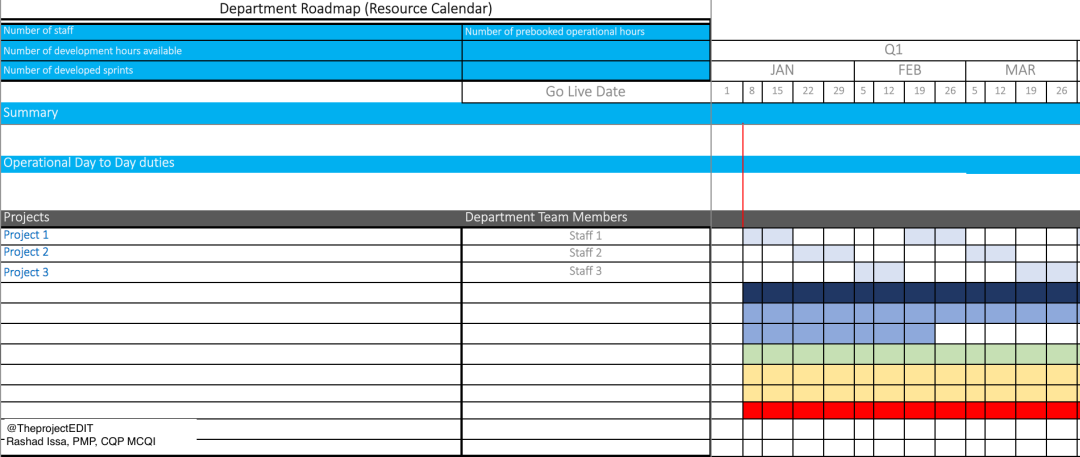Do you work in an environment that is on the go the whole time? Do you feel overwhelmed and stressed by the day to day tasks? Have you ever felt that there is no progression on what you are doing?
You are not the only one. It is very easy to fall into the trap of the daily operational duties and lose focus on the ultimate plan. But what is the ultimate plan? Where is it? who sets it? who defines it?
Whether you work for a large corporation or for a start up business, it is important to acknowledge that success comes from driving results. Whether you believe results are driven in the correct approach or not, things do progress. And this does not happen by accident. In general, businesses have objectives and strategies to grow their profits, increase their market share, or ultimately sell the company. All the work they do is aimed at that ultimate goal. So where do you fit in all this?
Setting out objectives should not be a complex process. In fact, in my experience, the simple the process is, the more likely you are to commit to the outcome. And if you are a project manager, then starting small builds up your experience to be able to apply it on a bigger scale.
Start Small, Consolidate, Decide or Recommend
So let us take this scenario:
You are a team of 2 that is in charge of developing, enhancing, and/or deploying new IT systems into the organisation. Your CFO walks in on a Monday morning requesting you to develop a new system needed to control business costs. It is a high priority. Two hours later, your COO schedules a meeting requesting you to merge two case management systems used by different entities to support business growth. In the meantime, the sales team had sold a product to a client that requires few enhancements on a tight timeline. And it is only Monday! You know that you do not have the resources to handle all of these new projects on top of the existing operational work. The organisation operates in a functional structure and not a projectized nor hybrid model.
What would you do?
While all of those requests are ranked as top priority, there are only 2 in the team. And being overwhelmed can be contagious. There are only set hours a day, a week, a month, a year, to get things done. So here are few things you can do to help you.
1) Start small: a 1000 piece puzzle starts with one. So let us focus on one project at a time. The PMBOK Guide elaborates on the processes that can be used to gather requirements and build your scope and your work breakdown structure. You have a certain number of hours a day, a week, a month, a year to perform certain tasks. So this is a good starting point. Start mapping the required work accordingly.
When you understand what the first project requires, you can move on to the next. By the end of the exercise, you would have gathered requirements for all 3 projects. And because setting objectives and time frames should not be complex, neither should your tools.

Keep the focus on the required work at this stage and not the available resources. Executives will help sort that out once they are presented with facts!
2) Consolidate your findings: because silos never proved to produced organisational effective results, it is now essential that you club all your findings from all the 3 projects into one place. This allows you to look at the full picture. This should provide clarity on what is required, when it is require, and who it is required from.
3) Drive your decisions based on facts: each organisation has its own structure and its own roles and responsibilities. This should be understood to best approach your overall findings. Are you responsible to sign off and approve projects? or are you responsible to recommend and support the business in its decisions? It is essential that you do not lose sight of this. A can do attitude combined with a realistic approach goes miles further.
In the above scenario, you are do not have the responsibility to sign off on projects, but you are expected to pull out your magic wand and make things happen. Then, you are in a strong position to get the support you want.
By presenting all the project requests and their requirements in one place, you are presenting the executives with a simplified and unified business case for them to make ultimate decisions. Whether those decisions are to hire more team members, de-rank one of the projects from a top priority, or reassess how to move forward, you have given them the facts. Whatever the decision is, you facilitated it. You are part of the company’s overall strategy.
Now step back from all of this and look at what you have done. You have created a document that includes all the proposed workload for a certain period of time (a quarter, a year, 3 years, etc..), your team allocation to this proposed work load, due dates to when key milestones will be achieved across several projects. You have basically created your own road map, your own plan!

Useful information. Lucky me I found your web site by chance, and I’m stunned why this accident didn’t happened in advance! I bookmarked it.
LikeLike